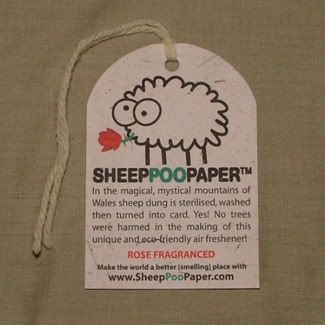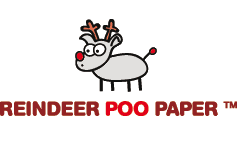 When you are an animal person poop becomes very important to you especially if you work with wild or exotic animals.
When you are an animal person poop becomes very important to you especially if you work with wild or exotic animals.
Why?
Because wild animals often hide illness and the condition of their poop can be an indicator of health–of course there are a lot of other ways to determine if something is wrong but since we tend to shovel a lot of the stuff (especially when you are working with elephants) it becomes something just short of an obsession.
The lack of poop, loose poop, really dry poop…you get the picture.
So, when I found a group with a strange sense of humor and odd idea of commerce that was, errr, pretty shitty, (sorry I just couldn’t resist) I had to share it with you.
Now perhaps I am behind (no pun intended) on things since they’ve been noticed by a bunch of oddballs and even won awards. Their product is sold in Manhattan and other places BUT let me redeem myself by saying  that I am cutting edge in that I do know about their plans to introduce Reindeer Poo Paper™–with any luck perhaps in time for the holidays next year?
that I am cutting edge in that I do know about their plans to introduce Reindeer Poo Paper™–with any luck perhaps in time for the holidays next year?
The Sheep Poo Paper™ people might at first seem to be an odd bunch but the group behind this product is the green company called Creative Paper Wales with some impressive goals:
Creative Paper Wales (and Sheep Poo Paper™) is all about rejecting established thinking about what is possible or sensible and then transforming that impulse into action and actually doing something differently. We are setting out to upset conventions and trying to see the world and its possibilities in a new and more sustainable way. Read more about Creative Paper Wales environmental policy here.
Now the team thinks they have the best job in the world. They collect super fresh sheep poo from the beautiful (and rainy) mountains of rural Wales and take it back to the mill, situated in southern Snowdonia to make the Sheep Poo Paper™ but they also make other papers from waste papers, rag and textile off cuts and just about anything else they can think of–as long as it contains cellulose fibers that are long enough. They don’t use trees–because they like them.
As for the processing of the poop, the sheep poo is completely sterilized by boiling it in a specially designed pressure cooker at over 120 degrees centigrade (using only the purest Welsh mountain water, of course) and then it is washed repeatedly over several days until it has lost approximately half its original weight leaving a different type of pile behind.
These fibers are then beat down and then blended with other recycled pulps until it reduces to a consistency suitable for making paper. When asked for more information the response was, “This is a difficult process to get right and the exact method is a closely guarded secret.”
Right!
 Now if you are also looking for fertilizer the by-product of the paper making process is that it produces a clean, sterile, rich, liquid fertilizer which the Sheep Poo Paper™ people store in a tank at their mill and pass on to local growers.
Now if you are also looking for fertilizer the by-product of the paper making process is that it produces a clean, sterile, rich, liquid fertilizer which the Sheep Poo Paper™ people store in a tank at their mill and pass on to local growers.
You can read more about the Sheep Poo Paper™ making process here.
If you would like to support this creative group click here to visit the Sheep Poo Paper™ shop.


